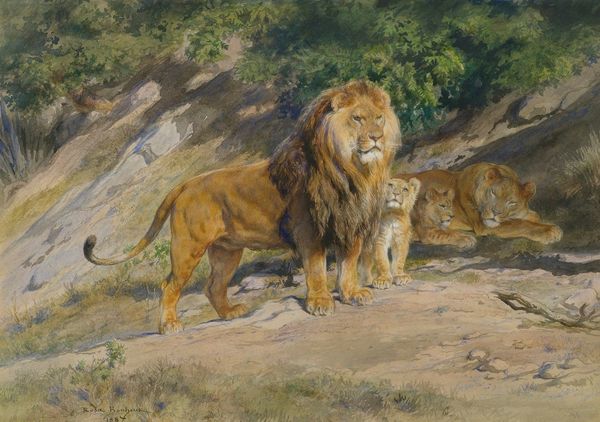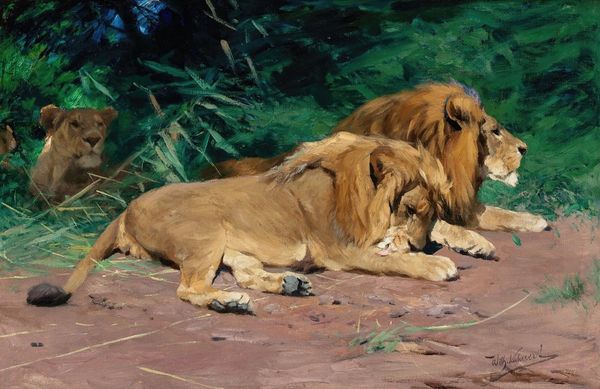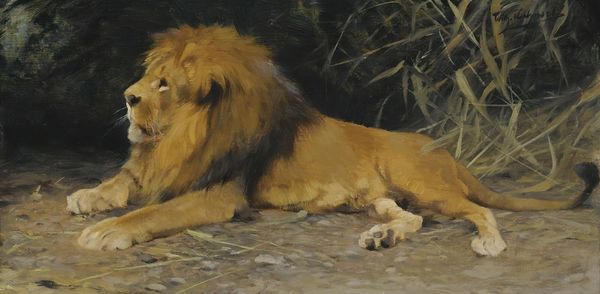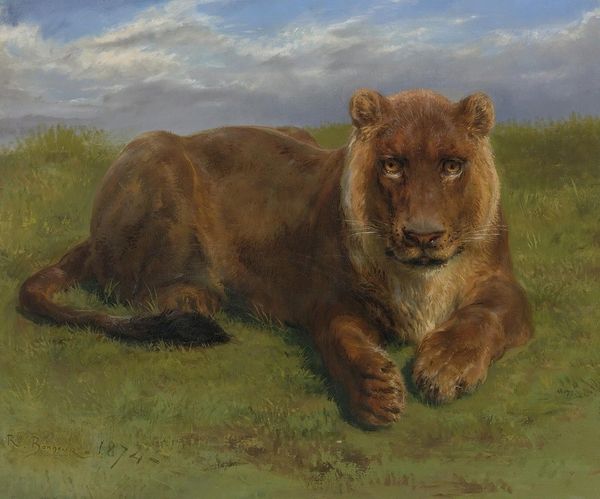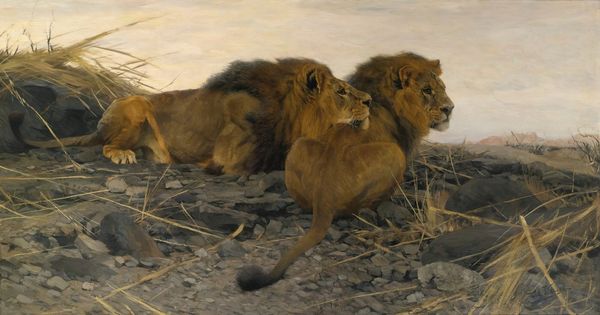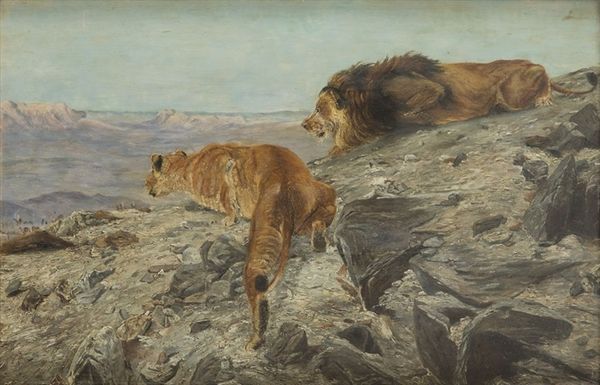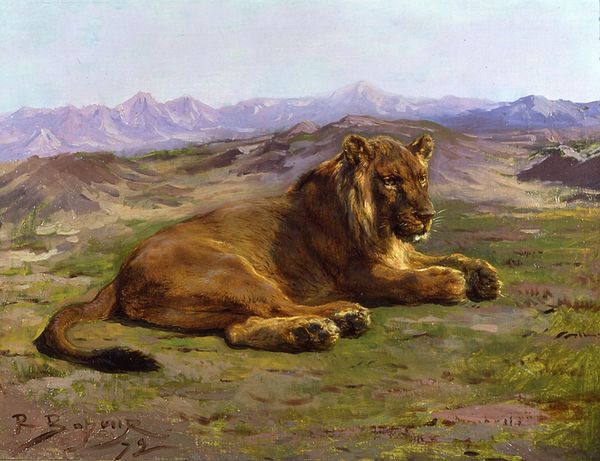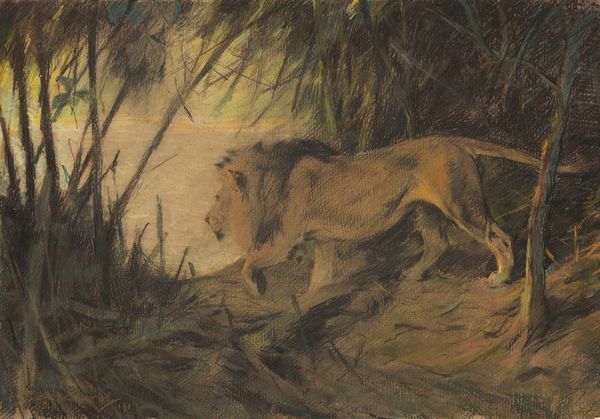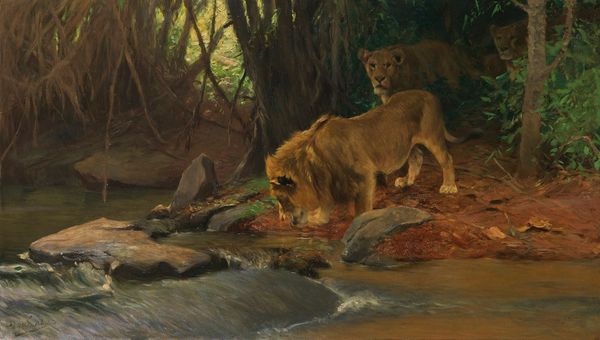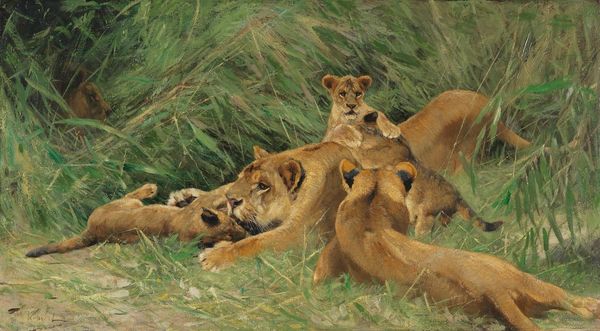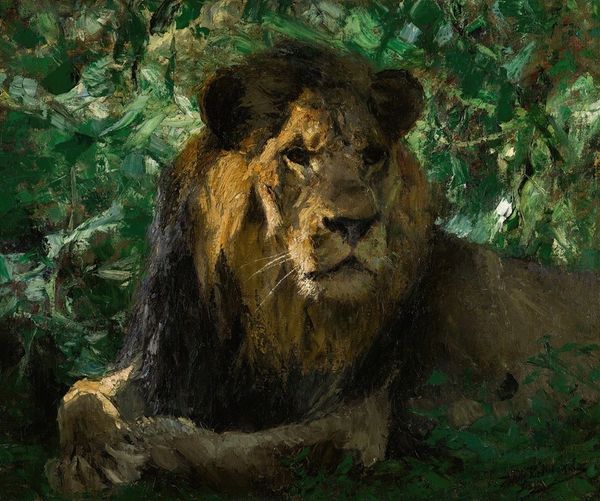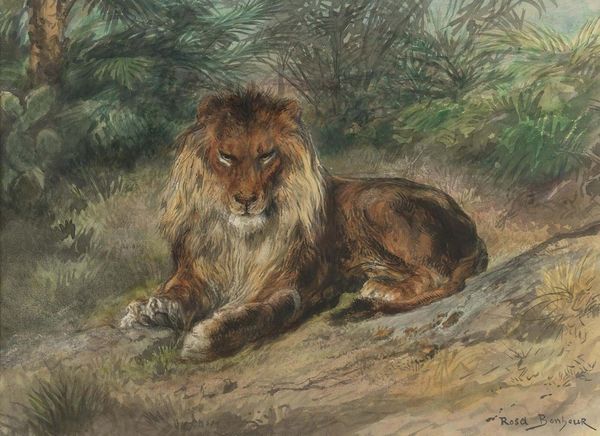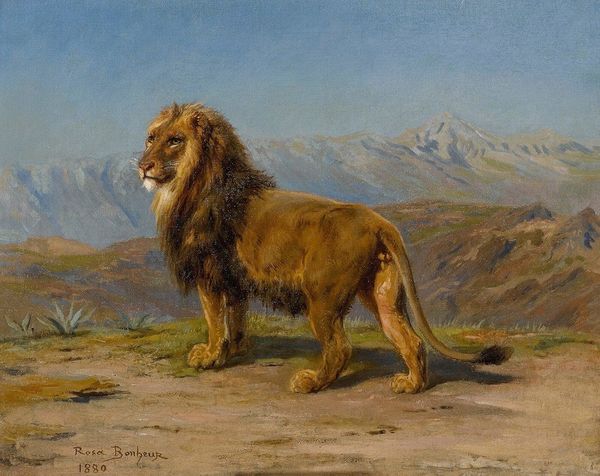
painting, impasto
#
portrait
#
animal
#
painting
#
landscape
#
nature
#
impasto
#
romanticism
#
animal portrait
#
genre-painting
#
naturalism
#
realism
Copyright: Public Domain: Artvee
Editor: This is Wilhelm Kuhnert's painting "The Lions' Den". The date of the artwork is unknown and its made with painting and impasto materials. I am struck by the way the light dapples across the lions; they seem both powerful and vulnerable in this moment of repose. What do you see in this piece, particularly in how the artist depicts the relationship between these animals and their environment? Curator: Notice how Kuhnert places the lioness slightly behind the male, alert, a guardian. The juxtaposition of the sleeping male with the watchful female evokes the symbolic weight of leadership and protection often assigned to lions. Think about how, historically, lions have been emblems of royalty and courage in numerous cultures. Does this painting, in its naturalistic style, somehow tap into that reservoir of cultural meaning? Editor: That's fascinating! I hadn't considered the historical symbolism. So, the painting isn’t just a depiction of lions, but also echoes these traditional ideas of power and watchfulness? Curator: Precisely! Consider also how the artist uses the landscape itself. The "den" isn't just a backdrop; it's a space of concealment and potential danger. Does this interplay of light and shadow add another layer, perhaps a sense of primal instinct and survival intertwined with the animals' symbolic significance? The cultural memory of the "wild" itself infuses the image with meaning, doesn’t it? Editor: Definitely! It shifts the scene from a simple portrait to something much more complex, layered with ideas about nature, power, and cultural history. I'll definitely look at animal paintings differently now. Curator: And I'll perhaps be more aware of how naturalistic renderings of power symbols affect viewers' experience of paintings!
Comments
No comments
Be the first to comment and join the conversation on the ultimate creative platform.
